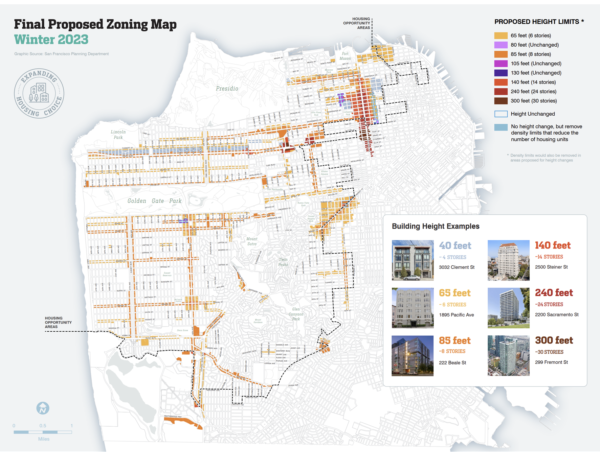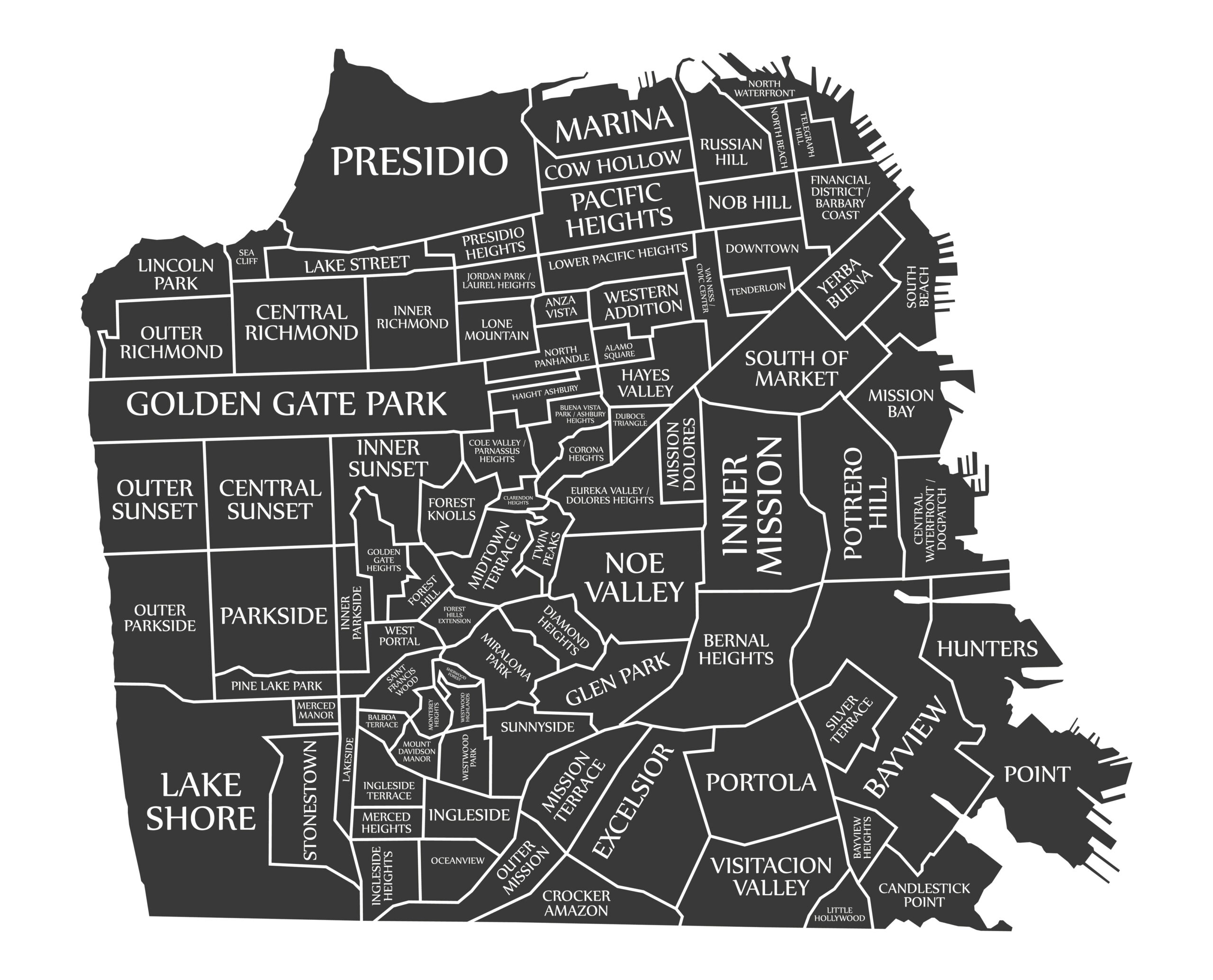The San Francisco Planning Department has released more details on its Expanding Housing Choice Program, a citywide rezoning that will primarily target the city’s westside. The rezoning proposal originates in the city’s 2022 Housing Element Update, which was adopted last January, and requires the city to rezone to allow for approximately 36,000 housing units in order to meet its regional housing need allocation (RHNA) goal. Much like last year’s Constraint’s Reduction Ordinance legislation, the Expanding Housing Choice Program proposes sweeping changes to the Planning Code that are meant to spur housing development. These changes include upzoning along various transit and commercial corridors, relaxing of development standards and density controls, adoption of objective design standards, and the creation of a local “housing program” to rival the state’s density bonus law.
The most visible–and perhaps most controversial–aspect of the Expanding Housing Choice Program is the proposed upzoning along commercial and transit corridors in the city’s “well-resourced neighborhoods”. At the end of January, the Planning Department released its final draft proposal map, which would see height limits of 65-85 feet (or 6-8 stories) on most major streets on the westside, where near uniform 40-foot (4 stories) height limits have reigned for decades. Although the proposal may look simple at first glance, it should also be noted that the draft map shows “final heights” that are intended to be the maximum height after the application of any density bonuses, and the actual base height limits will be lower than those shown on the draft map.

On February 1, 2024, the Department gave an informational presentation on the rezoning to the Planning Commission, and it was met with several hours of public comment. Many residents expressed disagreement over the upzoning, including concerns about the loss of quieter neighborhoods, impacts to traffic and infrastructure, and displacement of longtime residents and commercial uses. The comments were well received by the Planning Commission, who asked Department staff to consider altering the proposal to address the comments. If last year’s Constraints Reduction Ordinance is any indication, it is likely that the upzoning proposal will be modified several times and go through several heated hearings at the city’s Board of Supervisors, Land Use committee, and Planning Commission.
A less controversial aspect of the Expanding Housing Choice Program includes the creation of a new “local housing program” that will provide an alternative to the state density bonus law that has risen in popularity in recent years. The new local housing program will offer housing projects various development benefits, such as density bonuses and streamlined processing, in exchange for providing affordable housing units. Unlike the state density bonus, however, which gives developers the ability to override development standards, the local housing program will give the city more control over these projects’ physical aspects and design character.
In addition to these major changes, the city will also adopt objective design standards to streamline project review and give projects more certainty from the initial design phase. Other changes include “density decontrol” along transit and commercial corridors, which will remove hard density limits (i.e. 2 units per lot) and allows projects to construct as many units as would reasonably fit within the envelope of a code-complying project. The proposal would also provide an alternative way to comply with the city’s inclusionary housing requirements by allowing small developments (less than 25 units) to provide units as rent-controlled units rather than BMR units.
While the Planning Department has finalized its Expanding Housing Choice proposal after almost a year of outreach and public engagement, the legislation still needs to be introduced, reviewed, and adopted by the city’s legislative body. Due to the wide-reaching changes and controversial reaction to the proposal so far, we expect it will continue to evolve over the coming months.


